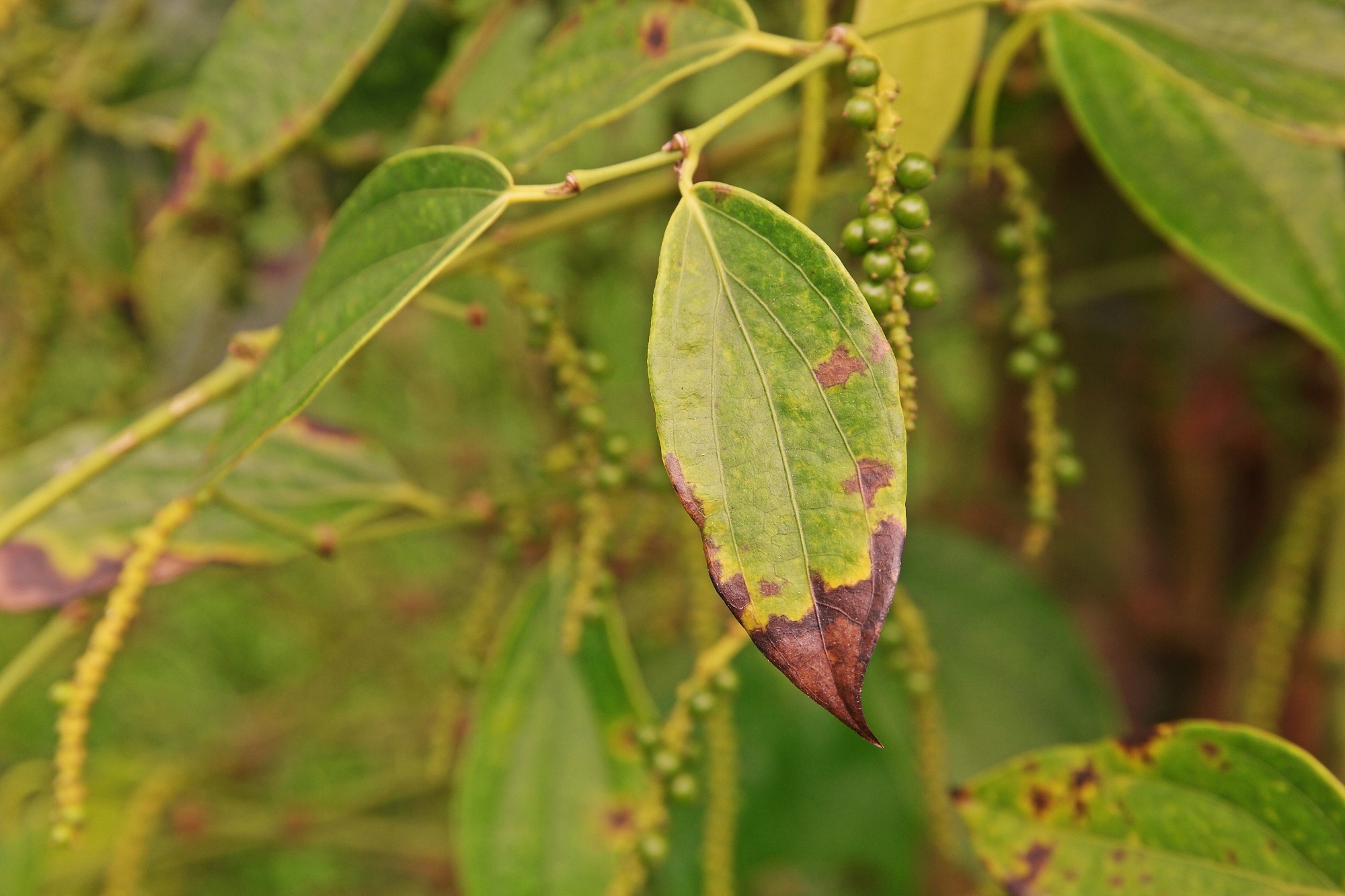In a paper published in the journal Scientific Reports, researchers tackled plant diseases affecting black pepper by proposing an intelligent transfer learning technique using deep learning, specifically a convolutional neural network (CNN). The research aimed to predict diseases in black pepper leaves using a newly developed image dataset sourced directly from fields.
 Study: Using Deep Learning to Detect Black Pepper Leaf Disease. Image credit: Lertwit Sasipreyajun/Shutterstock
Study: Using Deep Learning to Detect Black Pepper Leaf Disease. Image credit: Lertwit Sasipreyajun/Shutterstock
Researchers considered diseases such as anthracnose, slow wilt, early-stage phytophthora, and yellowing. Hyperparameters for deep learning models were tuned, with the residual network-18 (Resnet18) model demonstrating remarkable accuracy. The study presented an innovative approach in agriculture, employing deep neural networks for early-stage leaf disease identification and prediction, highlighting advancements in plant health monitoring.
Related Work
Previous works have extensively examined the impact of plant diseases on global agriculture, leading to substantial economic losses. Misjudgment and misinterpretation of visual symptoms in plants often result in the unauthorized use of pesticides, exacerbating the problem. Black pepper, a vital component in various cuisines and traditional medicines, is susceptible to diseases like slow wilt, quick wilt, phytophthora, foot rot, and yellowing. The demand for automated disease detection technologies in agriculture has grown, challenging traditional methods reliant on visual inspection.
Comprehensive Approach to Disease Classification
The research involves acquiring, preprocessing, and analyzing a black pepper plant leaf image dataset. The images were captured in the field using high-end electronic devices such as a Nikon Coolpix, a Sony digital single-lens reflex (DSLR), and an Android phone. Testing involved considering a total of 1800 photos comprising both diseased and healthy black pepper leaves. Researchers collected approximately 300 images for each specific disease type. Randomly capturing images from various regions in Karnataka, India, constituted obtaining the pictures.
Researchers actively performed image preprocessing to tackle challenges such as varied sizes, indistinct borders, and ambiguous backgrounds. The grab-cut algorithm obtained a ground truth image, defining the region of interest (ROI). They employed matrix laboratory (MATLAB R2023a) and Python for further preprocessing, using the Gaussian mixture model (GMM) to filter the background and foreground. The grab-cut algorithm was then applied for segmentation, resulting in labeled annotated image data.
Image augmentation was employed to expand the training dataset artificially. The dataset was modified by vertically rotating on the x-axis, rotating at a 90-degree angle, and rescaling. Researchers employed CNNs to extract features and classify diseases. The CNN architecture included convolutional layers, pooling layers, intermediate layers, and activation functions. The research also explored using specific CNN architectures such as Inception V3, Google Net, SqueezeNet, and Resnet-18 for effective disease classification in black pepper leaves.
Researchers implemented transfer learning to accelerate learning by leveraging knowledge from a known source domain and task to a target domain and task. The loss function, based on cross-entropy, was employed for classification-based optimization. The research details the implementation of transfer learning in a block diagram with the action flow.
The proposed methodology involves a comprehensive pipeline from image acquisition and preprocessing to advanced CNN architectures and transfer learning for disease classification in black pepper plant leaves. Combining these techniques aims to enhance the accuracy and efficiency of disease diagnosis in agricultural settings.
Deep Learning in Agriculture
Researchers utilized MATLAB R2023a to implement deep neural networks and employed Python to design neural networks. GIMP software serves the purpose of image preprocessing. Manual customization of the deep neural network took place by adding and modifying layers using the MATLAB R2023a deep neural network designer tool. Fine-tuning hyperparameters through trial and error was essential to optimize overall performance.
Researchers developed an ensemble of deep-learning models to address six black pepper leaf disease varieties. These models underwent initial training on ImageNet data as part of the transfer learning process. Subsequently, researchers actively replaced the upper layers of the CNNs with new layers tailored for the specific black pepper leaf dataset.
The implementation incorporated different optimizers, including "adam," "sgdm," and "rmsprop." Image preprocessing steps, such as resizing, image augmentation, and segmentation, were applied to enhance accuracy, resulting in F1 scores ranging from 0.78 to 0.98. Researchers conducted a comparative analysis with models from various research papers, showcasing the accuracy of the proposed model compared to other experiments. In the study, researchers actively explored nine different model combinations with various optimizers, employing performance metrics such as confusion matrices and accuracy graphs for evaluation. Specifically, Inception V3 demonstrated high accuracy in disease classification, ranging from 65% to 99%.
The performance of three models, "GoogleNet," "SqueezeNet," and "ResNet-18," was examined with different optimizers. The choice of optimizer significantly influenced the performance of each model. For instance, GoogleNet performed well with "rmsprop" and "sgdm," SqueezeNet showed better results with the "sgdm" optimizer, and ResNet-18 achieved high accuracy with "rmsprop." The proposed modified Res-18 model outperformed other deep models in the experiment, as evidenced by the accuracy percentages.
The study highlighted that while the proposed model showcased promising results, outcomes might vary for datasets beyond ImageNet and the specific diseased black pepper leaf dataset. The research underscored the importance of thorough experimentation and analysis for the optimal application of deep learning models in agricultural disease prediction.
Conclusion
In conclusion, the future of plant pathology and leaf disease detection holds great promise with the adoption of interactive region-growing segmentation techniques, leveraging advanced deep learning technologies, and exploring innovative feature extraction methods. The potential use of synthetically generated image data adds another dimension to the possibilities, contingent on the availability of adequate input data.
Integrating these advancements into plant pathology research can revolutionize disease identification and management in agriculture, providing more accurate, efficient, and comprehensive approaches. Continued exploration and integration of these techniques will be pivotal in shaping the evolution of plant disease detection and management strategies as technology advances.